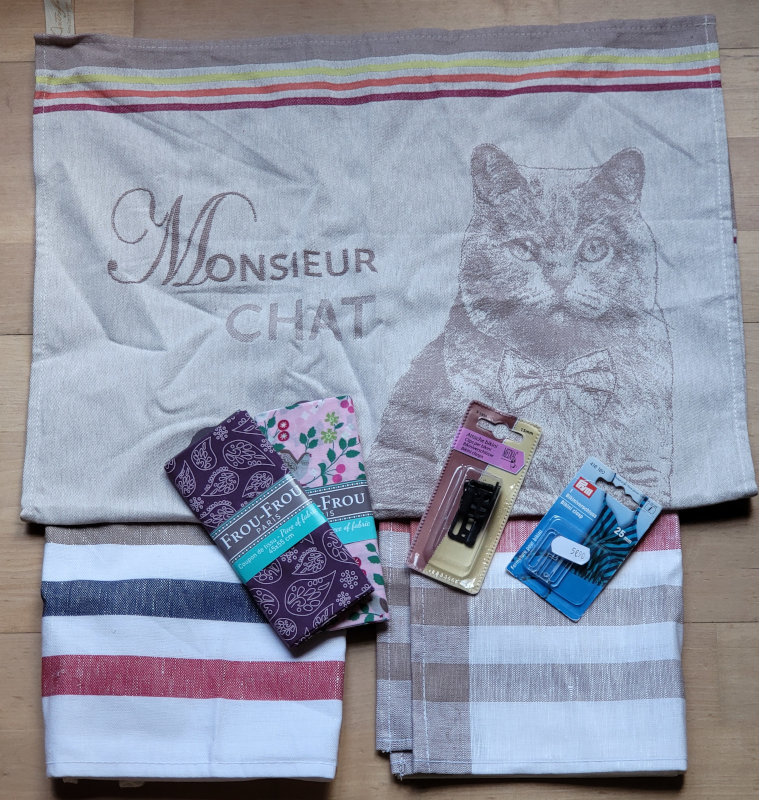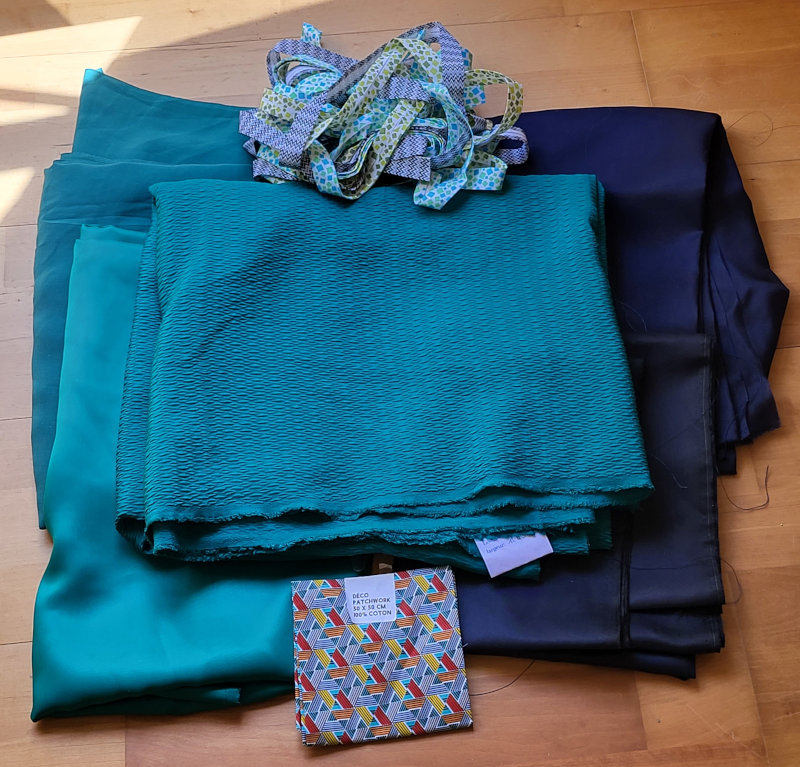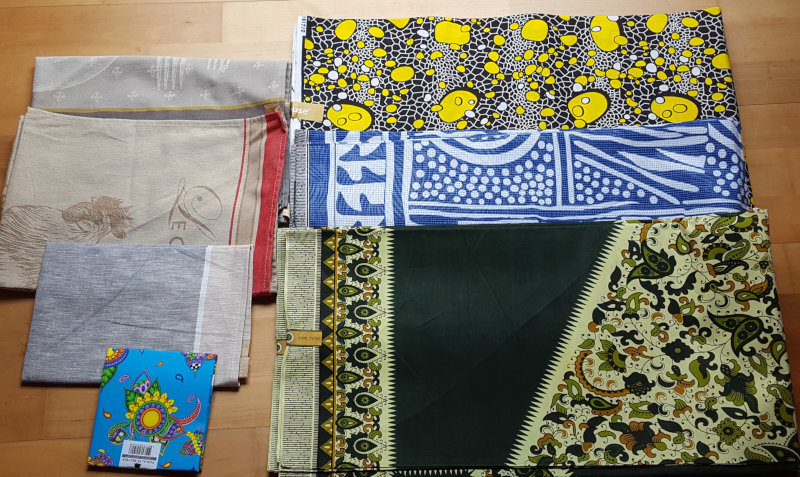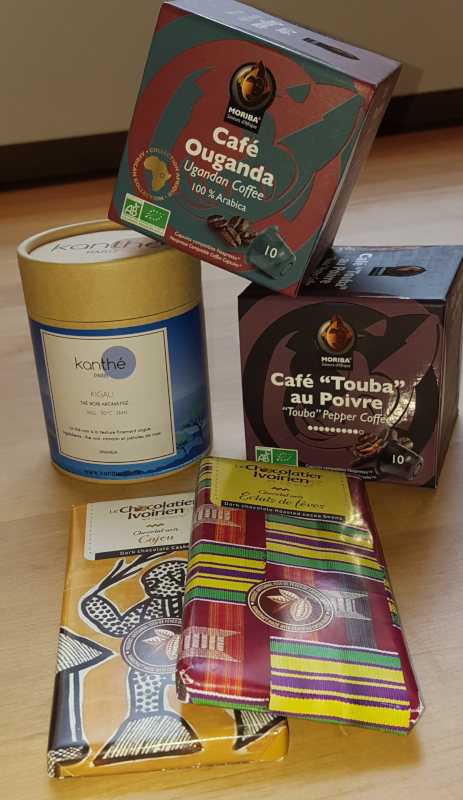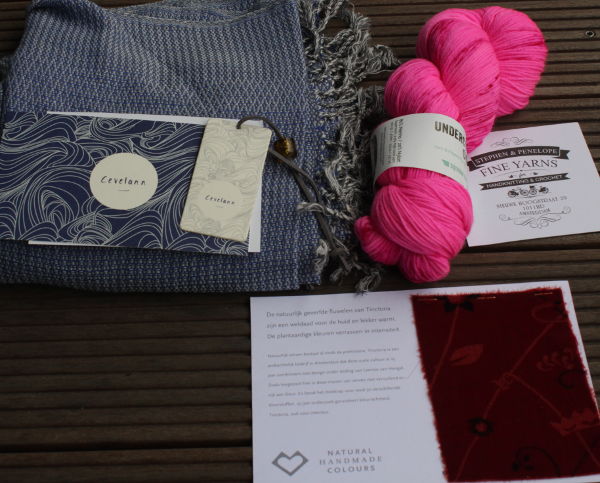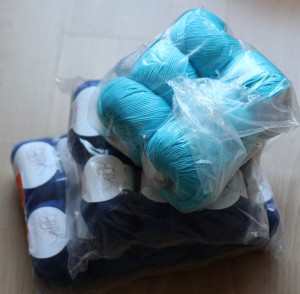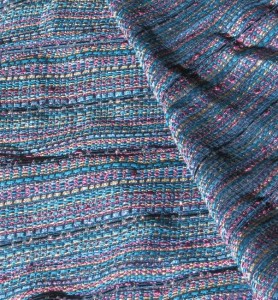Kaum zu glauben, aber ich kaufe nicht nur in Paris Stoffe.
Nachdem ich aus beruflichen Gründen ohnehin in Wien war, habe ich natürlich einen Ausflug zum berühmten Stoff Müller eingeplant. Und sicherheitshalber den Koffer eine Nummer größer genommen, als sonst nötig.
Jetzt ist das nicht mein erster Besuch in einer „Textilhalle“, von daher war ich etwas weniger erschlagen, als jemand, der nur „normale“ Stoffgeschäfte kennt, aber eindrucksvoll sind volle Lagerregale trotzdem jedes Mal. Und wie das bei solchen Läden ist, manchmal gefällt einem viel, manchmal nicht so viel.
In meinem Fall hatte ich auf Stoffe im Trachtenstil gehofft, die gab es auch, aber sie waren alle mit braun und das passte gerade nicht in mein Konzept. Bei den Spitzen hätte mir einiges gefallen, aber auch da nichts, was dringend war und farblich (oder von der Breite her) ins Suchschema passte.
Generell gibt es tatsächlich ungefähr jede Stoffart und vieles ist günstig, aber echte Wunder sind nicht zu erwarten. Ganz billig ist es dann halt auch Polyester. Und ich würde sagen… ähnlich wie andere Läden dieses Kalibers.
Allerdings habe ich dennoch einiges gefunden und zwar bei den Standardstoffen. Mitgenommen habe ich Leinen in pink und „Kritzloden“ (Was ich mit Walkolden übersetzen würde) in graumeliert und in blau (das blau geht so in Richtung preussischblau). Von beiden hätte ich ohne die Begrenzung des Koffers tatsächlich noch ein paar andere Farben mitgenommen (beim Leinen drei, beim Loden zwei) und dann wäre da noch ein Wollmelton gewesen in einem wunderschönen blau… aber gut, Koffer ist Koffer und ich musste am Ende tatsächlich den Reißverschluss für die Extension ziehen, was mir in Paris noch nie passiert war. (Wobei ich nach Paris öfter komme.)
Außerdem habe ich noch ein paar teilbare Reißverschlüsse in „Farben/Arten, die man nicht so ohne weiteres bekommt“ mitgenommen. Für wirklich Spottgeld. (In der Knopfabteilung war ich zum Glück völlig überfordert, aber ich will eh erst mal meine Knopfsammlung Zuhause sortieren… nachdem die einen neuen Platz gefunden hat. Wobei ich in Köln mit Knöpfen ja an sich gut ausgestattet bin, von daher kaufe ich da nur auf Vorrat, wenn es mich wirklich dringend anspringt.)
Tja… und beim Bummel durch die Wiener Innenstadt dachte ich, was ist das für ein interessantes Gebäude da drüben? Ging nachgucken… und fand (unter anderem) das Schaufenster von Wollewien. Ich kann echt nichts dafür, ich habe es nicht gesucht, ich wußte von nichts, solche Läden ziehen mich einfach magisch an.
Und natürlich, ganz ohne geht es nicht. Mein Bruder braucht Weihnachtssocken, er mag bunte Farben, bunte Sockenwolle habe ich nicht mehr viel… so zog ich mit zwei Knäuel Sockenwolle der Eigenmarke von dannen. (Aufgrund der Farbintensität und der Materialmischung sowie der Tatsache, dass der Laden auch Urth Yarns hat und dieses Garn „Made in Turkey“ ist… vermute ich mal kühn, das könnte auch von Urth Yarns sein.)
Abends suchte ich dann gleich nach einer Anleitung, mir fiel auch eine ein, die schon lange in meiner Ravelry Library ist… nur braucht die drei Farben. Laut google hat der Laden Samstag bis 18.00 offen, meine Veranstaltung ging bis 16 Uhr… kein Problem, ne? Naja, bis ich 16.49 aus der U-Bahn stieg, für den Weg noch mal bei google maps nachguckte, wo dann auf einmal stand „bis 17.00 Uhr“. Zum Glück habe ich mich noch an ein paar Details der Umgebung erinnert, bin nicht den von google vorgeschlagenen Weg gegangen, sondern habe eine Abkürzung über eine Treppe genommen, so dass ich tatsächlich noch vor Ladenschluss im Laden stand und mein drittes Knäuel bekommen habe.
Fazit: Wien ist eine tolle Stadt, die zwei Nachteile hat: Es ist so weit weg und mein Koffer war zu klein. (Und ich habe in knapp fünf Tagen fast 2kg zugenommen.)
Falls ich noch mal nach Wien fahre, werde ich mich vorher informieren, wo es große Versandkartons gibt, dann kann ich mir die Stoffe nach Hause schicken. 😉 Allerdings würde ich dann vermutlich den Laden von Textil Müller in Wien selber besuchen, Leinen und Loden soll es da auch reichlich geben. Der Weg in das Stammhaus ist doch relativ lange, insbesondere weil nur alle halbe Stunde ein Zug fährt und man halt relativ lang wartet.
Aber noch mal nach Wien fahren steht auf meinem Plan. Wann auch immer…


